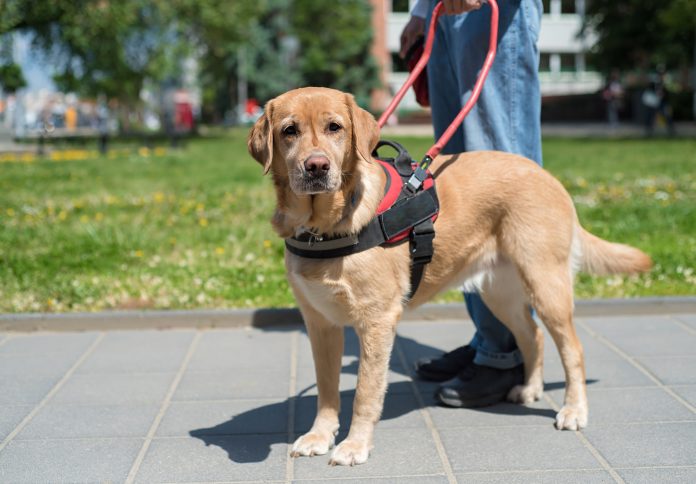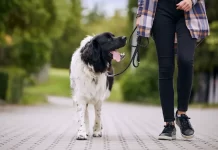It is believed that almost 20% of the US population has some form of disability. Those disabilities could be physical in nature or mental.
In any case, through years of research and trial, humanity has found that a service dog can be an exceptional companion to disability sufferers. With a service dog by their sides, those that need assistance can expect their animals to help them traverse their communities, alert them to oncoming strokes, provide emotional support and more.
If you own a dog that you’d like to make into a service dog for either your support or to support someone else, you’re in the right place. Below, our team describes the steps you should take to get your dog recognized and performing as a top-notch disabilities companion.
Table of Contents
1. Know Your Dog
All dog breeds can be service dogs. This may come as a surprise to some that tend to see Labradors, Golden Retrievers and a few other select breeds solely carrying service responsibilities.
Just because all dogs can provide disability services though doesn’t mean that they’re all created equal. Each dog has unique qualities that help or hinder their ability to assist with certain tasks.
For example, if you’re looking for a PTSD service dog, a dog of any size will be able to provide you with the companionship and support you need to achieve that end. Alternatively, if you’re looking for a seeing-eye dog, larger breeds will be easier to follow given their ground clearance and sturdier frames.
2. Consider Hiring a Professional Trainer
The most important aspect of creating a service dog is training them to be service dogs. Service dogs must possess a mastery of commands that far exceeds the standards showcased by run-of-the-mill dogs on the street including the basics (sit, stay, come, etc.) and specialty skills that are related to the disability they’re aiding.
Several organizations offer ADA-certified trainers to help get your dog to where they need to be. We recommend always going with an accredited trainer as some people will claim to be service dog trainers to pull in more business without being necessarily qualified.
3. Self-Train Your Animal
Contrary to popular belief, you don’t have to go to a certified trainer, or any trainer at all for that matter, to make your dog a service dog. If you’re up to the challenge of teaching your dog everything s/he needs to know to be helpful, you’re welcome to do so.
Just understand the serious responsibility your dog has when aiding a person with disabilities. Are your training skills enough to prepare your dog to do their best work?
Be honest with yourself about that question and if you feel the answer could be no, seek professional assistance.
4. Pass a Public Access Test
If you’re curious to know how prepared your dog is to provide services post-training, subject your dog to a public access test. There are several versions of public access tests out there, all of which hope to confirm your dog’s ability to act appropriately when in the community.
Our favorite public access test is the one that’s issued by the IAADP which we feel offers reasonable minimum training standards to test against. You can find information on that public access test here.
5. Introduce Your Dog to Their New Person (If Applicable)
Many people train service dogs for providing a friend, family member, or client with their services. If that’s the case for you, after your dog has exhibited their ability to navigate requirements, take your dog to their human so they can connect.
Remember, dogs are emotional creatures and, even if well-trained, will take time to adjust to a new environment.
Do everything you can to create a smooth connection between your dog and the person they’re helping. The more sensitive you are during this transition the more both parties will benefit.
6. Consider Identifying Gear/Materials
Service dogs don’t need to have any formal means of identifying themselves as service dogs. That means that the gear you sometimes see service dogs wearing is not required nor is formal certification or registration.
Just because you don’t have to do those things doesn’t mean you shouldn’t.
By getting your service dog identifying gear, you’ll be subjected to less harassment by people that don’t appreciate your animal in places when non-service-animals are not allowed. Furthermore, registration in a global database could prove useful if an apartment manager or another entity tries to confirm the validity of your service dog claims.
Again, none of this is required and so long as you have a protected disability, you don’t need to prove anything regarding your animal.
7. Ensure You or Your Dog’s End-User Is Eligible
As we mentioned, the only thing you must have by law in order for your dog to be considered a service dog is a protected disability. Disabilities that are protected range from being blind to having cancer so talk with a disabilities advocate to find out if service dogs are generally considered useful for what you or your third-party is managing.
A Service Dog Can Vastly Improve the Quality of One’s Life
There’s a reason why getting a service dog has been a go-to for so many disability sufferers. From providing companionship to assistance getting up the street, well-trained dogs can unlock a person’s life potential.
If you’re on the fence about getting a service dog to help with your needs, we recommend taking the leap assuming you’re ready to be an affectionate owner.
For more information on all things lifestyle, browse more of the newest content on our blog!



















